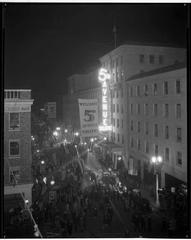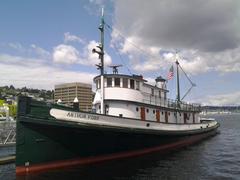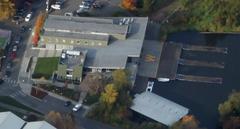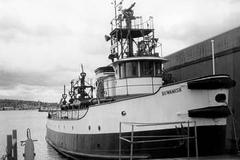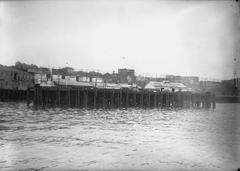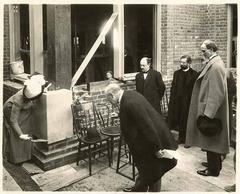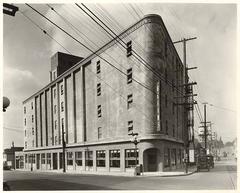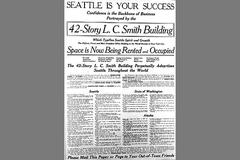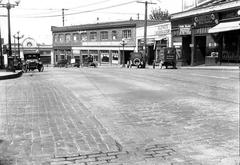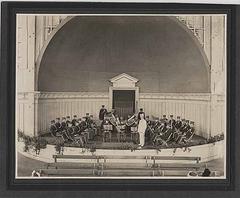Louisa Boren Park Seattle: Visiting Hours, Tickets, and Guide
Date: 04/07/2025
Introduction: Louisa Boren Park—A Seattle Gem with History and Vistas
Louisa Boren Park stands atop Seattle’s Capitol Hill, offering a harmonious blend of historic significance and natural beauty. Established in 1913 and named for Louisa Boren Denny—one of Seattle’s pioneering settlers—the park rewards visitors with sweeping eastward views of Lake Washington, the Cascade Mountains, and, on clear days, Mount Baker. As a living legacy of Seattle’s Olmsted Brothers park system, Louisa Boren Park is not only a coveted sunrise lookout but also an urban retreat cherished by nature enthusiasts, history buffs, and locals seeking a tranquil escape (Seattle Olmsted Parks; Seattle Parks and Recreation; MyNorthwest).
Contents
- Historical Background
- Natural Features and Ecological Value
- Visitor Information: Hours, Admission, Accessibility
- Trails and Walking Paths
- Community and Cultural Significance
- Special Events and Guided Tours
- Nearby Attractions and Connections
- Safety, Park Etiquette, and Practical Tips
- Frequently Asked Questions (FAQ)
- Conclusion
- References
Historical Background
Origins and Pioneer Legacy
Louisa Boren Park was established in 1913 as a tribute to Louisa Boren Denny, a key figure in Seattle’s founding. The land, once part of larger Interlaken Park, was included in the Olmsted Brothers’ early 20th-century vision for interconnected green spaces across the city (HistoryLink). The Olmsteds emphasized preserving natural landscapes and maximizing public access to scenic viewpoints.
Louisa Boren Denny (1827–1916) traveled west with the Denny Party, arriving at Alki Point in 1851 (Boren STEM K-8; Find a Grave). Her resilience, resourcefulness, and advocacy for progressive causes, including women’s suffrage and workers’ rights, left a lasting mark on Seattle’s early development (Year of Seattle Parks; HistoryLink).
Park Development and Significance
The Olmsted plan’s influence is evident in the park’s naturalistic design—native flora, minimal landscaping, and expansive views. The dedication ceremony in June 1914, attended by Louisa Boren Denny herself, cemented the park’s status as a living memorial to Seattle’s pioneers (MyNorthwest). In 1975, the installation of Lee Kelly’s untitled sculpture added an artistic dimension to the park’s cultural legacy (Wikipedia).
Louisa Boren Park remains one of the city’s best-preserved green spaces, valued for its connection to Seattle’s roots and its ongoing preservation efforts (Seattle Fandom; Lonely Planet).
Natural Features and Ecological Value
Panoramic Views and Native Flora
Unlike many Seattle parks, Louisa Boren Park’s elevated, east-facing viewpoint offers rare panoramic vistas of Lake Washington and the Cascades, making it a popular spot for sunrise watchers and photographers (Holidify). The park’s canopy includes mature Douglas firs, bigleaf maples, and native understory plants, which provide vibrant foliage in autumn and a cool, green oasis in summer.
Urban Oasis
Serving as a natural refuge within the city, the park fosters urban biodiversity, supports birdlife, and maintains Seattle’s temperate microclimate. Its wild character aligns with the Olmsted vision of accessible, restorative green spaces.
Visitor Information: Hours, Admission, and Accessibility
- Visiting Hours: Open daily from 4:00 AM to 11:30 PM (Seattle Parks and Recreation).
- Admission: Free entry; no tickets or passes required.
- Location: 1400 Lakeview Blvd E, Seattle, WA 98102.
- Parking: Limited free street parking on Lakeview Blvd E and nearby avenues. Arrive early, especially at sunrise or sunset.
- Public Transit: Served by several King County Metro bus routes; bicyclists can access via Lakeview Boulevard bike lanes (Travel Lemming).
- Accessibility: Paved path to the main viewpoint is wheelchair accessible. Most trails are unpaved and uneven; sturdy footwear is recommended.
- Facilities: No restrooms or concessions. Closest restrooms are at nearby Volunteer Park.
Trails and Walking Paths
The park features informal, unpaved trails through wooded slopes, connecting to Interlaken Park for longer walks or jogs. Trails are short and gentle but can be muddy in wet weather. Birdwatchers and wildflower enthusiasts will find rewarding sights along the paths.
Community and Cultural Significance
Louisa Boren Park is a cherished, quiet local retreat. It stands apart from busier parks as a “hidden gem,” valued for its serenity, neighborhood character, and inspiration to artists and photographers. Its dedication to the city’s founding matriarch underscores a deeper connection to Seattle’s heritage.
Special Events and Guided Tours
The park does not regularly host events or guided tours to maintain its peaceful ambiance. Occasionally, local volunteer groups organize habitat restoration and educational walks. Check Seattle Parks and Recreation or community boards for updates.
Nearby Attractions and Connections
- Lakeview Cemetery: Resting place of many Seattle pioneers, just across the street.
- Volunteer Park: Home to the Seattle Asian Art Museum and Conservatory, with accessible restrooms and cultural events.
- Interlaken Park: Adjacent forested trails for walking, running, and cycling.
- Capitol Hill: Vibrant dining, arts, and nightlife are just minutes away.
Safety, Park Etiquette, and Practical Tips
- Safety: The park is generally safe, but exercise caution at dusk or after dark. Stay aware and avoid isolated areas if alone.
- Etiquette:
- Stay on paths to protect vegetation.
- Keep noise levels low; respect the tranquility.
- Dogs must be leashed and waste disposed of properly.
- Supervise children near slopes.
- Alcohol, open flames, and overnight camping are prohibited.
- What to Bring:
- Layers and rain gear (weather changes quickly).
- Picnic blanket or chair.
- Snacks and drinks (no concessions).
- Trash bags to pack out garbage.
- Camera or binoculars for photography and birdwatching.
Frequently Asked Questions (FAQ)
Q: What are Louisa Boren Park’s visiting hours?
A: Open daily from 4:00 AM to 11:30 PM.
Q: Is there an entrance fee or ticket required?
A: No, admission is free and open to all.
Q: Is parking available?
A: Limited free street parking nearby; public transit and biking are good alternatives.
Q: Is the park accessible for people with disabilities?
A: The main lookout is wheelchair accessible via a paved path; most trails are not.
Q: Are dogs allowed?
A: Yes, leashed dogs are welcome.
Q: Are there restrooms in the park?
A: No; use facilities at Volunteer Park or nearby venues.
Q: Can I hold events or weddings in the park?
A: Small gatherings are welcome; check with Seattle Parks for permits.
Conclusion
Louisa Boren Park is a captivating blend of Seattle’s natural beauty and historical depth. With free access, extended hours, and unrivaled sunrise vistas, it is an inviting spot for photography, reflection, and unobstructed views of the city’s eastern landscape. Whether you’re a local or a visitor, you’ll find Louisa Boren Park a rewarding and peaceful highlight of Seattle’s park system.
For more details, download the Audiala app, explore related park guides, and follow us on social media for updates and travel inspiration.
References and External Links
- Seattle Olmsted Parks
- Seattle Fandom
- MyNorthwest
- HistoryLink
- Boren STEM K-8
- Park Preview
- Travel Lemming
- Seattle Parks and Recreation
- Year of Seattle Parks
- Lonely Planet
- Holidify
- Wikipedia
- Vagrants of the World
